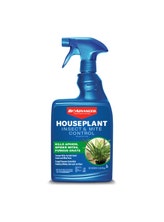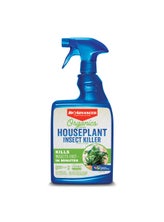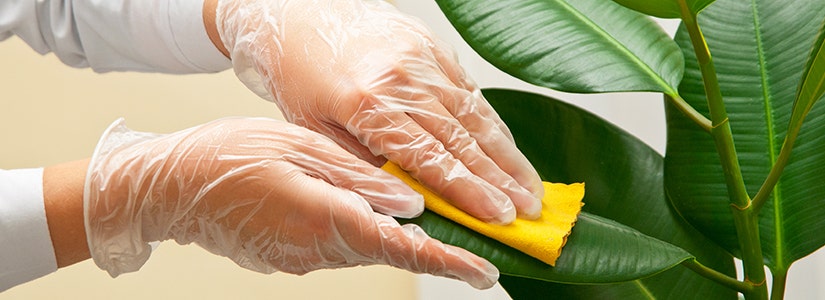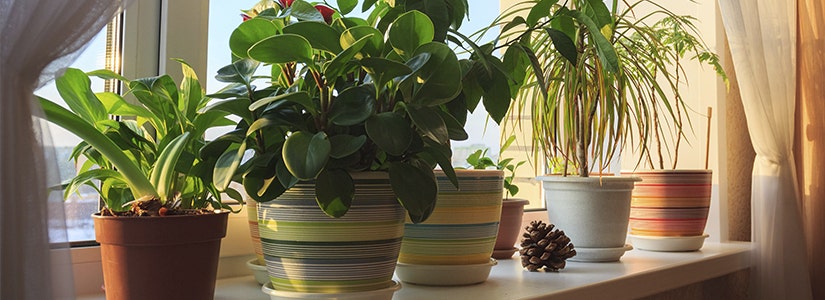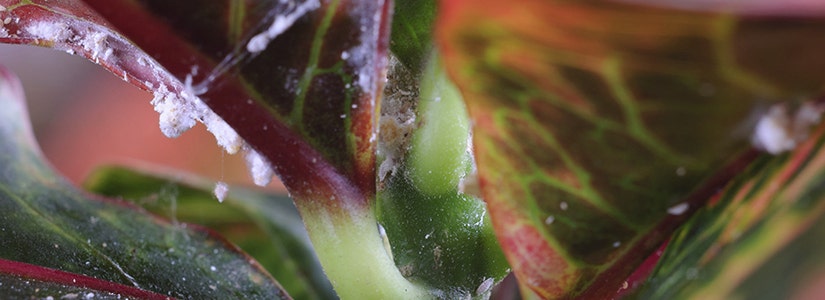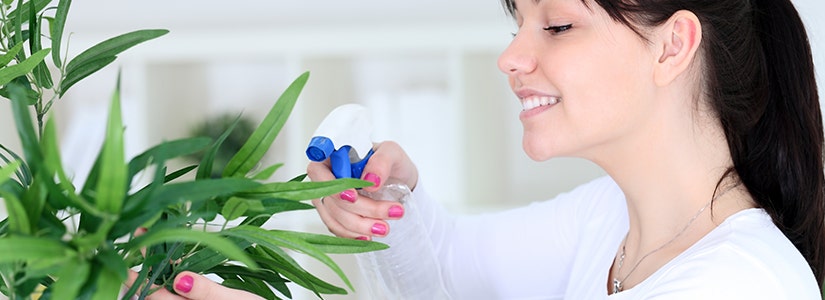

- Home
- Solution Center
- Learn
- Learn House Plants
- Growing Houseplants
Growing Houseplants
Growing Houseplants
Selecting a houseplant is often more about examining your home and lifestyle than it is about gardening expertise. Once you define the parameters of your home's growing conditions and your signature style, it's not difficult to discover plants to suit the setting. Then you can determine if you're ready for an experts-only finicky beauty or a bulletproof, never-say-die plant.
Whether you have rooms filled with plants or are pondering a first-time purchase, use our checklist to help select the right plant for your life.
Evaluate Your Home
Light
Most plants need some light to grow. Tour your home to determine how much light it offers.
- If you have bright south- or west-facing windows, you can grow plants that need full sun.
- Many houseplants need bright, indirect light, which describes a spot located in a room that receives sun for several hours per day, but where the plant itself doesn't receive direct sunlight.
- Some foliage plants can survive with very little natural light, such as rooms with windows that face north or corners of rooms away from windows. Examples include Mother-In-Law's Tongue, Cast-Iron Plant and Chinese Evergreen.
- You can always provide supplemental light to plants. Some grow lights come in sizes that fit traditional light fixtures, which can turn a tabletop into an ideal growing environment. Plants that thrive with artificial light include flowering plants, such as African Violet, Begonia, Cyclamen and Orchid. Foliage plants that grow well with lighting include Aloe Vera, Fittonia, Peperomia and Polka-Dot Plant.
- Learn more about some of the best low light houseplants. If your plants need more light, learn about lighting indoor houseplants from the University of Missouri Cooperative Extension Service.
Space
How much room do you have to host houseplants? If you have small rooms filled with furniture, select small plants for tabletops, such as dwarf specimens or short succulents. In larger rooms, options include tall plants such as potted palms or Ficus trees.
Consider a plant’s mature size. Some plants, like African Violet, stay small. But a tiny Norfolk Island Pine or Rubber Tree can grow into a larger-than-life specimen. Unless you’re willing to prune, root-prune or toss-and-replace plants, you’ll need to do some research to ensure you’re getting a plant that fits your space.
Inventory Your Life
Time
Plants are living creatures and require care.
- If you’re consistently short on time, opt for low-maintenance plants such as cacti or succulents.
- If you’re reliable about chores and can handle weekly watering and light primping, consider more demanding houseplants.
- In general, flowering plants typically need more water and attention than their foliage cousins.
Consider Growing Conditions
Temperature
Plants have specific temperature requirements. Most houseplants are tropical and thrive when temperatures hover between 65-75°F during the day and about 10 degrees cooler at night. If your home has an area that’s consistently chilly or overly warm, you may not want to include plants in those rooms – or you can search out plants adapted to temperature extremes.
Humidity
In all seasons but winter, most homes offer adequate humidity for houseplants. In winter, dry air can spell death for plants. Avoid placing plants that require high humidity, such as Ferns, Orchids or Bromeliads, in dry spots in your home. Tuck humidity lovers into moist places, such as near a dishwasher or in a bathroom.
Take Stock Of Your Décor
Different plants suit different interior design motifs.
- Spiky cacti, succulents and plants with strong leaf shapes, such as Xanadu Philodendron or Flamingo Flower, complement modern design themes.
- Plants with soft, touchable textures (Ferns, Weeping Fig, Gold Dust Croton) blend well with cozy, homey settings.
Be Careful Around Kids And Pets
Are small children or pets part of your life? Obviously, you’ll probably want to avoid cacti or succulents with sharp spines. But some houseplants, like Caladium, Philodendron, Peace Lilly and even Poinsettia carry hidden risks. For a curious pet or child, these plants could cause illness or injury. Make sure to do your research before purchasing your plant.
Give Houseplants The Care They Need
No matter what kind of houseplant you have, you’ll succeed when you cover the basics of care and follow these tips to keep them healthy.
Soil
When you purchase a houseplant, it's most likely growing in a potting soil mix, which contains various materials, such as peat moss, perlite, bark, vermiculite or sand.
- This planting mix pampers roots by retaining nutrients and water, allowing water to drain away, and creating air pockets.
- If you need to replace or add soil, choose a packaged potting soil mix labeled for houseplants.
- Don't add garden soil to houseplants.
Pots
A houseplant container is more than just a decoration. Make sure you consider the plant's needs when making your selection.
- Houseplant pots need drainage holes – water must be able to drain away from soil and roots. If a decorative pot lacks drainage holes, use it as a cachepot.
- Pot material affects water needs. Porous containers, such as unglazed terra-cotta, lose water through the pot, which means you'll need to water plants more frequently. Plants in glazed or plastic pots require less frequent watering.
Water
Determining how much to water is probably the trickiest part of growing houseplants. Water needs depend on many factors, including the plant, soil, air temperature, humidity and light levels. Foliage also influences water use. Thick, waxy leaves don't lose water as quickly as soft, lush ones do.
- Before watering, check soil moisture using a soil meter or finger. If soil is dry to about 1.5 inches deep, water.
- Apply water slowly so it soaks into soil.
- Empty catch trays if water remains in them for more than an hour or two. Never leave pots sitting in water.
Humidity
Tropical foliage plants need humid air, which can be challenging in winter, when household relative humidity hovers around 5-10%.
- Raise humidity around plants with a room humidifier.
- Or place plants on a pebble-lined tray filled with water. Keep the water level just below pebbles. As the water evaporates, it raises humidity around plants.
- You can also mist plants with room-temperature water. Avoid misting walls or furniture.
Temperature
Research specific temperature requirements for your plants.
- Some plants, like Cyclamen or Calceolaria, prefer lower temperatures.
- Others, such as the Weeping Fig (Ficus Tree), can't tolerate cold drafts.
- Locate all plants away from heating vents.
Fertilizer
Feed indoor plants using a balanced fertilizer labeled for houseplants.
- Always follow label instructions.
- Over time, fertilizer salts build up in soil. Every 4-6 months, remove or leach these salts by slowly pouring water through soil. Use an amount of water roughly equal to twice the pot volume. Pour slowly, allowing water to drain away from the pot.
- If white fertilizer salts appear on soil, remove them, along with approximately one-fourth inch of soil, before leaching.
